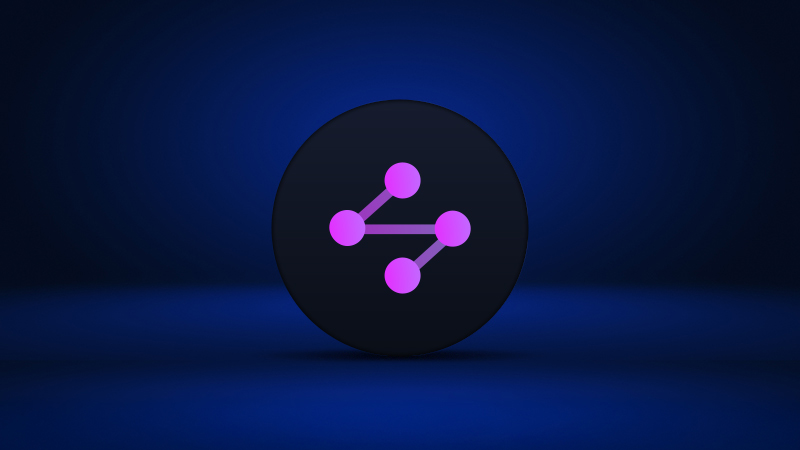What Is Synapse (SYN)?

As blockchain ecosystems continue to expand and diversify, the need for seamless interoperability between networks has become increasingly urgent. Synapse (SYN) emerges as a leading cross-chain communication protocol designed to bridge this gap. With its robust suite of tools, including cross-chain messaging, asset transfers, and smart contract calls, Synapse enables the next generation of decentralized applications (dApps) to operate across multiple blockchains efficiently and securely.
In this article, we will explore what Synapse is, how it works, the role of the SYN token, its use cases, and why it plays a critical role in the evolution of Web3 infrastructure.
What Is Synapse?
Synapse is a cross-chain interoperability protocol that allows users and developers to move assets and data between blockchains. It aims to solve one of the core limitations of the current blockchain landscape: fragmentation. With multiple networks offering unique features, applications, and communities, seamless communication between these networks is essential to unlock the full potential of decentralized technologies.
Launched in 2021, Synapse supports a wide array of blockchain networks, including Ethereum, Avalanche, BNB Chain, Polygon, Arbitrum, Optimism, and more. Unlike traditional bridges that only enable asset transfers, Synapse allows for arbitrary messaging and smart contract interaction across chains, paving the way for a truly unified Web3 experience.
How Does Synapse Work?
At the heart of Synapse’s infrastructure is its Generalized Cross-Chain Messaging protocol. This system enables the secure transmission of data and instructions across different blockchains. Here’s a breakdown of the main components:
1. Cross-Chain Messaging
Synapse allows developers to send messages from one smart contract to another on a different blockchain. This functionality is key to creating interoperable dApps, such as decentralized exchanges (DEXs), lending protocols, and governance systems that operate across multiple chains.
2. Cross-Chain Asset Transfers
Synapse supports seamless asset bridging using canonical tokens and liquidity pools. Users can easily move stablecoins and other tokens between supported networks, often with lower fees and higher speeds than centralized exchanges.
3. Synapse Router
The Synapse Router acts as an intelligent coordination layer that determines the best route for asset transfers and message relays. It enhances efficiency and reduces the complexity for developers building cross-chain applications.
4. Security Model
Synapse employs a combination of multi-signature wallets, validator nodes, and cryptographic proofs to ensure secure message transmission and asset bridging. Its modular architecture also allows for future upgrades and enhancements to its security layers.
What Is the SYN Token?
SYN is the native utility and governance token of the Synapse Protocol. It serves several core functions within the ecosystem:
- Governance: SYN holders can participate in protocol governance through SynapseDAO. This includes voting on key decisions such as protocol upgrades, network support, fee parameters, and treasury allocations.
- Incentives: Liquidity providers and relayers are rewarded in SYN tokens for facilitating cross-chain asset transfers and maintaining liquidity pools.
- Security: In the future, SYN may also play a role in securing the network via staking mechanisms and validator participation.
Key Features of Synapse
- Multi-Chain Support: Synapse connects dozens of EVM and non-EVM chains, making it one of the most versatile interoperability protocols available.
- Low Latency Transfers: Users can enjoy near-instant token transfers across supported networks, significantly improving the user experience.
- Developer-Friendly SDK: Synapse offers a powerful software development kit (SDK) and API that simplifies integration for developers building cross-chain dApps.
- Composable Infrastructure: The protocol supports composable messaging, allowing dApps to interact with smart contracts on other chains without deploying duplicate code.
Use Cases
Synapse’s functionality opens the door for a wide range of real-world use cases:
- Cross-Chain DEXs: Enable users to trade assets between chains without relying on centralized platforms.
- Multi-Chain Governance: DAOs can implement decision-making processes that span multiple blockchains.
- Omnichain dApps: Build applications that can function simultaneously on multiple networks, improving accessibility and scalability.
- Bridge Aggregators: Tools can aggregate various bridges using Synapse as a backend to offer the best routing for users.
Why Synapse Matters
Synapse addresses one of the most pressing challenges in the blockchain ecosystem: the lack of interoperability. By enabling secure, efficient, and composable cross-chain communication, Synapse is laying the groundwork for a more connected and scalable Web3.
As decentralized applications become more complex and users demand more flexibility, the role of interoperability protocols like Synapse will only grow in importance. Whether you’re a developer building the next cross-chain DeFi protocol or an investor looking to understand the future of blockchain architecture, Synapse represents a key component in the evolution of a truly decentralized internet.
Synapse is more than just a bridge. It’s a foundational layer for the interoperable future of Web3. By enabling seamless cross-chain communication, it empowers developers, enhances user experience, and facilitates the next wave of decentralized innovation. With its growing ecosystem, strong technical foundation, and forward-thinking design, Synapse is well-positioned to shape the next chapter of the blockchain revolution.